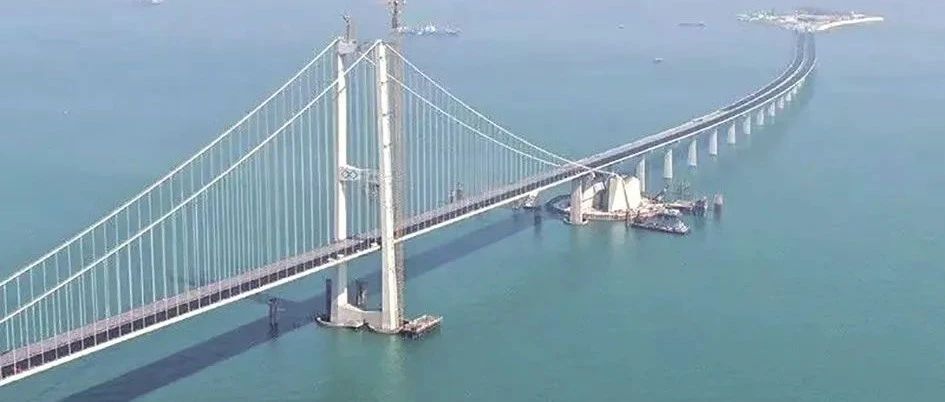On June 30th, the Shenzhen-Zhongshan Link was officially opened to traffic. This cross-sea cluster project, which is about 24 kilometers long and integrates "bridges - islands - tunnels - underwater interchanges", was extremely difficult to build.

After seven years of preparation and another seven years of arduous construction, the Shenzhen-Zhongshan Bridge Passage mainly consists of the Eastern Artificial Island, the underwater tunnel, the Western Artificial Island, the Eastern Non-navigable Span Bridge, the Shenzhen-Zhongshan Bridge (formerly known as Lingdingyang Bridge), the Western Non-navigable Span Bridge, the Zhongshan Bridge and the Wanqingsha Cross-sea Extra-large Bridge from east to west. The project includes many world records, such as the world's first two-way eight-lane underwater tunnel and the world's largest span fully offshore sea suspension bridge.
Among them, the Shenzhen-Zhongshan Bridge (formerly known as Lingdingyang Bridge) is the main navigable span bridge of the Shenzhen-Zhongshan Bridge Passage that crosses the Lingdingyang Waterway and the Longxue South Waterway. It adopts a double-tower, three-span continuous and fully floating system and is the world's largest span sea-crossing steel box girder suspension bridge and the sea-crossing bridge with the highest navigable clearance in the world.
From the design perspective, the tower body of the Shenzhen-Zhongshan Bridge is of portal shape, and the main girder is a flat and streamlined integral steel box girder. The anchorage adopts an offshore super-large gravity-type anchorage. The anchorage, as the "concrete counterweight" that stabilizes the suspension bridge, bears all the loads on the upper part of the bridge by anchoring the main cable. The Shenzhen-Zhongshan Bridge has two "concrete counterweights" on the east and west sides. The single area is equivalent to 17 international standard basketball courts and weighs about 1 million tons, making it the world's largest anchorage of a sea-crossing suspension bridge.
In order to firmly anchor both ends of the main cable in the "concrete counterweights", a 2000 MPa high-strength and super-durable main cable anchoring system was adopted in the construction of the Shenzhen-Zhongshan Bridge. Through this anchoring system, the loads on the main cable are transmitted to the "concrete counterweights" for bearing. This highly difficult anchoring system was first applied in the construction of the Shenzhen-Zhongshan Bridge.
On November 9, 2022, the last section of the steel box girder was jacked into position. This jacking construction was China's first attempt at multi-point synchronous continuous jacking of super-large steel box girders with ultra-high piers, super-large spans and super-large tonnage in the open sea. The separate walking jacking system and computer integrated control were adopted. The walking device and the jacking jack alternately acted to jack and move the thousands of tons of heavy steel box girders forward, and the precise positioning of the steel box girders was achieved through the deviation correction device.
Seven years of research and seven years of construction. The official opening of the Shenzhen-Zhongshan Bridge Passage is inseparable from the long-term difficulties overcome and wisdom dedication of workers in various fields. This is a cross-era landmark and another self-transcendence of Chinese constructors in technology and engineering.

International Department: Room 2507-2508, Tower C of Wanda Plaza, Tongzhou District, Beijing 101118, China.
+86-13021287080
info@boyoun.cn